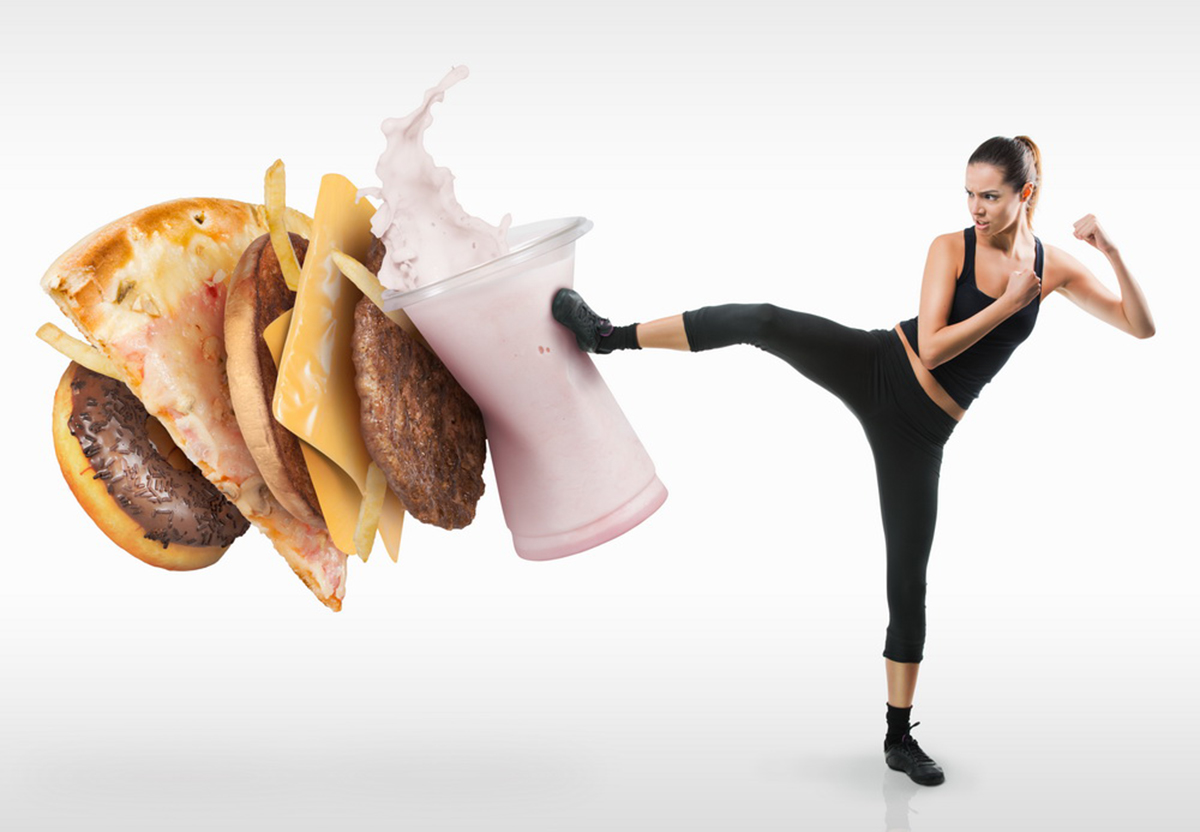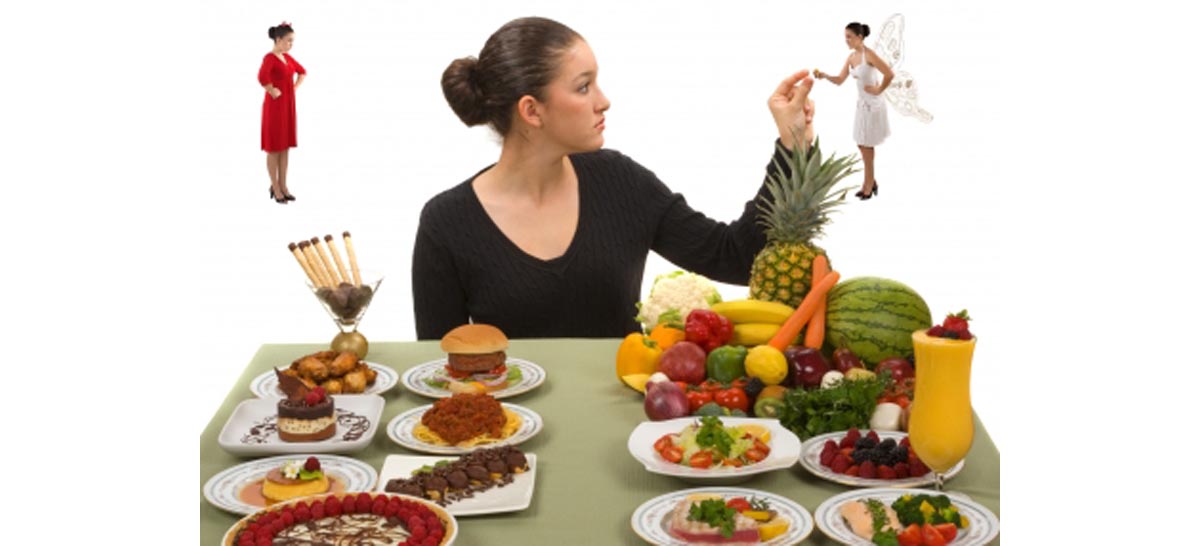How to Train Your Brain to "Just Say No" to Food
Diet expert Jon Gabriel once weighed over 400 pounds. Narrowly escaping death on 9/11 by simply not showing up for doomed Flight 93, when his office in the World Trade Center was destroyed, he resolved that somehow he was going to defeat certain death from obesity the same way he had escaped certain death on 9/11. And for Jon Gabriel, part of the answer for solving his obesity problem turned out to be imagining he was been chased by lions and tigers and bears.
What is a neuron?
A neuron is a nerve cell. It can be "turned on" by receiving a very slight electrical charge. The Soma, or body of the neuron, which is analogous to the tap root of a tree, provides nourishment for the axon, which is analogous to the trunk of a tree. The neuron reaches out to other neurons through dendrites, which are like branches.A single neuron can have as many as 100,000 dendrites. The dendrites don't touch other nerves directly, but send out neurotransmitters over the synapse, or gap, between the nerves. These neurotransmitters may, or may not, activate other neurons, depending on the neuron's central integrative state.
What is the central integrative state?
The world around us provides us with more potential sensory inputs than our brains can process. Even though a single neuron in the visual cortex of the brain can receive electrical stimulation from as many as 12,000 other neurons at the same time, and a single neuron in the prefrontal cortex of the brain can receive electrical stimulation from as many as 80,000 neurons at the same time, there are limits to how much information a neuron can receive.
Neurons can act as filters for sensory inputs depending on whether they are configured to fire if they receive inputs from one other neuron and another, or one other neuron or another. And some inputs are designed not to fire if they receive certain inputs. That's the case with the neurons that control appetite.
The neuron that transmits a signal that tells the brain "You're hungry now" connects to five other neurons. One of the neurons that connects to it tells it whether there is danger present. If this neuron is firing, then the hunger neuron won't fire, since it's not a good thing to stop and eat a snack if, for instance, you are being chased by a saber-toothed tiger.
Another of the neurons tells the hunger neuron whether food is seen. If this neuron does not fire, then the hunger neuron will not fire, since this particular neuron does not make you hungry for food that is not there. (Obviously, that is the job of other neurons.)
Two more neurons report whether blood sugar levels are low and whether the stomach is growling. So, if:
- The neuron that reports stomach growling is activated,
- The neuron that reports sight of food is activated,
- The neuron that reports low blood sugar levels is activated, and
- The neuron that reports danger is not activate, then and only then
this neuron will send a message on to the rest of your brain that it's time to eat.
Obviously, something goes wrong with the sight of food neuron and the blood sugar levels neuron for most of us. We get hungry even when we don't see food and, as any diabetic can tell you, we eat even when our blood sugar levels are adequate or diabetic. Jon Gabriel found that for him, and for many of the people who follow his suggestions, fear trumps the other inputs. Electrical inputs from the fear neurons turn off the hunger neurons. But why should this be a problem in the first place?
How Your Brain Can Be Trained Not to Keep You Hungry
Neurons can learn. If you spend any time at all driving down a typical city street or watching commercial television, one of the constant inputs into your brain is "I see food. I see food. I see food." Eventually the hunger neuron does not need to get electrical information from the "I see food" neuron to fire.
These changes are part of a phenomenon known as neural plasticity. Neurons inside the brain (and out) rewire themselves on the basis of how often they are stimulated. If your brain is constantly bombarded with images of food, the food sensing neurons that relay an electrical charge to your appetite neurons get more and more connected so it takes less and less of a stimulus to make them fire.
Something similar happens to the blood sugar sensing neuron. The "I see food" neuron fires so often that eventually "I am thinking about food" or "I drove by the Big Boy sign" sends a strong message to the hunger neuron. This message is so strong that it overrides the "But my blood sugar levels are fine" message from the blood sugar neuron.
What happens here is feedback disinhibition. This is literally a condition of inhibiting inhibition because there is feedback from the hunger neuron "I'm going to eat anyway." The "But my blood sugar levels are fine" message simply gets ignored as the brain rewires itself to adjust for stimuli it receives over and over and over again.
Neural plasticity, however, is not necessarily a bad thing. Jon Gabriel figured out that one way to correct this problem was to imagine being chased by wild animals so his hunger would go away. Fortunately for Gabriel and his readers, most of us are not chased by wild animals that want to eat us in our daily lives, so our brains are still sensitive to this input.
Gabriel realized that it is possible to change the central integrative state of a functional unit of neurons by changing the central integrative state of a single neuron. How did he do this?
Gabriel managed to change his central integrative state by imagining himself being chased by lions and tigers and bears. The neuron that reports "Danger! Danger!" to the brain had not been activated so many time that the brain stopped paying attention to it. And because of the way that nerve cell is wired into the rest of the brain, the sensation of danger, whether real or imagined, scared Jon Gabriel's brain into making it easy for him to avoid eating so he could lose weight.
You may not need to imagine yourself being chased by wild animals. You might be able to scare yourself thin just be reading the many, many reports of how overweight can shorten your life. Or rob you of your sex life. Or bankrupt you. Or leave you old and lonely, surrounded by a house full of cats. Or just make you look fat.
Whatever you need to do be "scared straight" from overeating, consider doing it. Your brain is hard wired to make dieting easier when you do.
- Gabriel, Jon. The Gabriel Method: The Revolutionary Diet-Free Way to Transform Your Body (Atria Books/Beyond Words, 2009).
- Photo by shutterstock.com

